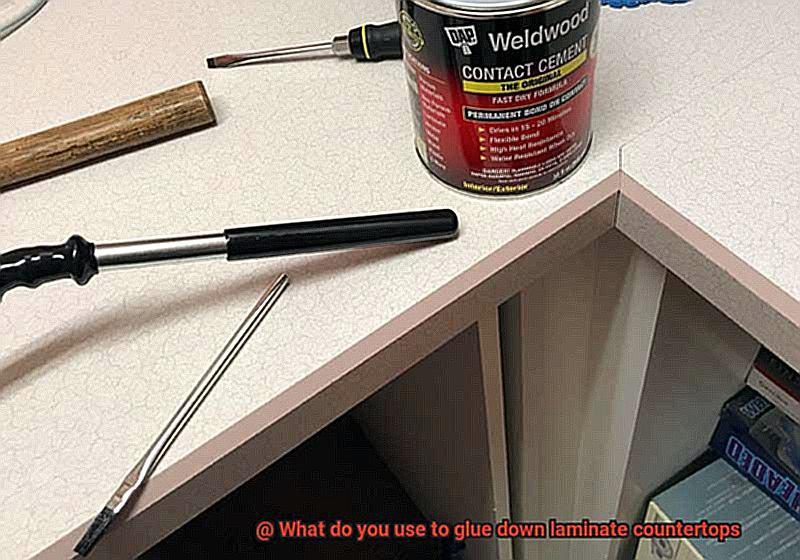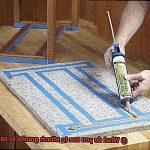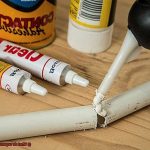Welcome to the Ultimate Guide to all things CA glue. If you’ve ever been frustrated by glue that just won’t stick, you’re in for a treat. Today, we’re delving into the world of CA glue and tackling the burning question: “What does CA glue not stick to?”
We all know that CA glue, also known as cyanoacrylate adhesive, is famous for its quick and mighty bond. But even the strongest adhesive has its kryptonite. While CA glue can handle a wide range of materials like a champ, there are a few sneaky substances that it simply refuses to adhere to.
Join me on this journey as we uncover the secrets of CA glue’s stickiness (or lack thereof) and discover which materials are immune to its charms. From plastics to metals, wood to glass, we’ll explore unconventional surfaces and answer the age-old question: “What can I count on CA glue to bond, and what will it stubbornly reject?”
Whether you’re an experienced DIY enthusiast, a budding craftsman, or simply someone who wants to expand their adhesive knowledge, this guide is your go-to resource. So grab your safety goggles and get ready to dive into the captivating world of CA glue. Let’s separate fact from fiction and unlock the mysteries of what truly defies the adhesive powers of CA glue.
What is CA Glue?
Contents
When it comes to bonding materials, you need an adhesive that is not only strong and reliable but also versatile enough to work with a wide range of surfaces. Enter CA glue, also known as cyanoacrylate adhesive. This fast-acting adhesive has become a staple in various industries and DIY projects due to its exceptional bonding properties and ease of use.
Types and Uses:
CA glue comes in different viscosities, each with its own unique purpose. Thin viscosity CA glue is perfect for filling small cracks and gaps, while medium viscosity strikes a balance between flowability and gap-filling ability. Thick viscosity CA glue is ideal for larger gaps or bonding vertical surfaces.
As for its uses, CA glue can bond materials such as wood, metal, plastic, rubber, ceramic, and even fabric. Whether you’re repairing broken furniture, assembling model airplanes, or creating intricate crafts, CA glue has got you covered.
How it Works:
CA glue works through a process called polymerization. When the adhesive comes into contact with moisture in the air or on the surfaces being bonded, it rapidly hardens and forms a strong bond. This quick bonding time, ranging from a few seconds to a couple of minutes, allows for efficient and time-saving projects.
Safety Precautions:
While CA glue is a remarkable adhesive, it’s essential to take safety precautions when using it. The adhesive can bond skin and eyes together if proper care is not taken. It’s crucial to wear protective gloves and eye protection when handling CA glue. Additionally, ensure that you work in a well-ventilated area to avoid inhaling the fumes.
Benefits of CA Glue:
- Strong and reliable bonding: CA glue creates secure bonds that withstand stress and strain.
- Versatility: It can bond a wide range of materials, making it suitable for various applications.
- Quick curing time: CA glue sets rapidly, allowing for efficient work and reduced waiting time.
- Invisible bond lines: Due to its clear composition, CA glue leaves behind minimal residue or visible traces once it cures, ensuring a seamless finish.
- Heat and chemical resistance: CA glue can withstand high temperatures and harsh environments, making it suitable for demanding applications.
Non-Porous Surfaces
It’s as if the materials are playing a game of hide-and-seek, with the glue slipping and sliding away. But fear not, my friends, for there are ways to conquer this challenge and achieve the results you desire.
Non-porous surfaces, those smooth and shiny materials like glass, metal, plastic, and certain ceramics, present a unique obstacle for CA glue. Their slick nature makes it difficult for the glue to establish a strong bond. However, all hope is not lost.
One method to enhance adhesion on non-porous surfaces is to roughen them up a bit. Grab some sandpaper or a trusty file and create tiny grooves or scratches on the surface. These imperfections provide more area for the glue to cling onto, increasing the chances of a successful bond and ensuring a hold that won’t let go.
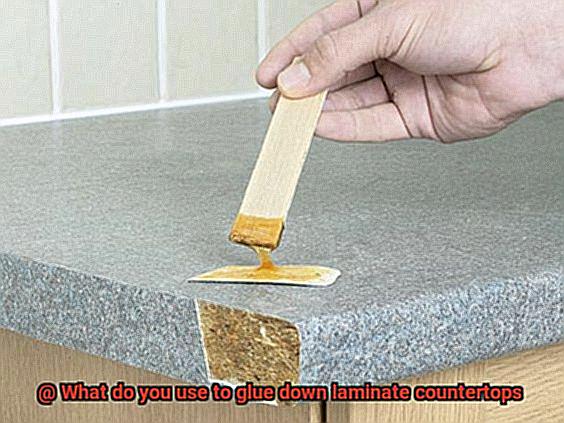
Another technique involves using a primer or activator specially designed for CA glue. These magical potions trigger a chemical reaction between the glue and the surface, supercharging the bond strength. Before applying the CA glue, simply follow the manufacturer’s instructions and apply the primer or activator accordingly.
Now, it’s important to keep in mind that not all non-porous surfaces will respond favorably to CA glue, even with these preparation methods. Some materials may simply refuse to cooperate with our adhesive friend. To avoid heartbreak and disappointment, always test a small inconspicuous area before committing to the entire project. Trust me, it’s worth it.
In some cases, alternative adhesives may prove more suitable for bonding non-porous surfaces. Enter epoxy-based adhesives, known for their exceptional adhesion on both porous and non-porous materials. They’re like the superheroes of bonding.
Before you embark on your bonding journey with CA glue or any other adhesive, make sure those non-porous surfaces are sparkling clean. Remove any oils, dirt, or debris that could hinder the bonding process. A quick wipe with rubbing alcohol or a suitable cleaner should do the trick.
Last but certainly not least, always respect and obey the manufacturer’s instructions for proper application and curing of the CA glue. Pay attention to the amount of glue you use, apply even pressure during bonding, and grant the adhesive sufficient time to reach its full strength. Patience is key in this game.
Polyethylene and Polypropylene
Polyethylene and polypropylene are two popular types of plastics known for their durability, flexibility, and resistance to chemicals. However, when it comes to bonding these plastics with CA (cyanoacrylate) glue, it can be quite the challenge.
CA glue is famous for its strong adhesive properties and versatility. It can bond wood to metal, ceramics to glass, and almost anything in between. But when it comes to polyethylene and polypropylene, it’s like trying to stick a magnet on a teflon-coated frying pan – not an easy task.
The reason for this difficulty lies in the low surface energy of polyethylene and polypropylene. These plastics have a smooth and slippery surface that repels adhesives like CA glue. It’s like trying to make your ex listen to reason – it just doesn’t work.
There are ways to overcome this challenge and achieve a strong bond between polyethylene or polypropylene and CA glue. One method is to roughen up the surface using sandpaper or a file. By creating tiny scratches, you’re giving the glue more points of contact to grip onto, increasing the chances of success.
Another technique is using a primer specifically designed for bonding polyethylene and polypropylene. These primers contain special chemicals that react with the plastic surface, creating a rougher texture that promotes better adhesion with CA glue. It’s like giving your glue a secret weapon.
It’s important to note that even with these preparation methods, the bond may not be as strong as with other materials. So before relying on it for critical applications like holding up your grandma’s heirloom vase, make sure to test the bond strength first.
If you’re looking for an even stronger bond, there are alternative adhesives available that are specifically formulated for bonding polyethylene and polypropylene. These adhesives are like the superheroes of the adhesive world, tackling the low surface energy challenge head-on and providing stronger and more reliable bonds.
Silicone

Today, let’s explore the fascinating world of silicone and its intricate relationship with CA glue. If you’ve ever tried to bond these two materials together, you know it’s like trying to fit a square peg into a round hole – an impossible task. But fret not, my friends, as I’m here to shed light on why this sticky situation occurs.
Let’s start with the basics. Silicone is an incredibly versatile material with a multitude of applications, thanks to its unique properties. However, when it comes to CA glue, silicone poses a formidable challenge. The reason behind this lies in the chemical composition of silicone.

Silicone consists of long chains of silicon and oxygen atoms, intricately bonded together by strong covalent forces. This molecular structure grants silicone exceptional stability and resistance to various substances, including our beloved CA glue. When attempting to bond silicone with CA glue, the adhesive merely rests on the surface without forming a robust connection. It’s as if they belong to different worlds.
But fear not. There are specialized silicone adhesives available that are specifically formulated for bonding silicone materials. These adhesive superheroes possess enhanced compatibility with silicone surfaces and can create significantly stronger bonds compared to CA glue alone.
Here’s another twist in our tale – certain types of silicone-based products, such as oils or grease, can create a formidable barrier that thwarts the adhesive properties of CA glue. These sneaky substances contain low-viscosity silicone compounds that make it even more challenging for our glue to adhere.
To make matters worse, any dirt or residue on the silicone surface further impedes the bonding capabilities of CA glue. So, before embarking on your adhesive adventure, ensure your silicone surface is pristine and free from any contaminants.
In conclusion, my fellow adhesive enthusiasts, CA glue and silicone do not see eye to eye. Their chemical disparities prevent them from forging a strong bond. However, fear not, for there are alternative adhesives specifically designed to conquer the silicone challenge head-on. So, if you’re planning to bond silicone, grab one of these specialized adhesives and witness the magic unfold.
Until next time, keep on sticking (just not with CA glue and silicone).
Teflon (PTFE)
Imagine the frustration of trying to glue two pieces of Teflon together, only to find that the adhesive simply won’t stick. In this article, we will delve into the fascinating world of Teflon (PTFE) and explore why it poses such a challenge for adhesives like CA glue. Prepare to be amazed by the science behind Teflon’s nonstick properties and discover strategies to overcome this sticky situation.
The Enigma of Teflon’s Nonstick Surface
Teflon is renowned for its nonstick properties and finds widespread use in a variety of applications. From cookware to industrial coatings, its smooth and slippery surface plays a vital role. However, this unique attribute also presents a significant challenge when it comes to adhesion.
Unveiling the Chemistry of CA Glue
CA glue, or cyanoacrylate adhesive, is known for its fast-acting nature and strong bonds on most surfaces. Understanding the chemistry behind this adhesive is key to comprehending the struggle with Teflon. Enter cyanoacrylate ester molecules, which form chemical bonds through polymerization.
A Clash of Forces: Teflon vs. CA Glue
Teflon’s low surface energy acts as a repellent against cyanoacrylate ester molecules, preventing them from effectively bonding with the surface. Instead of adhering securely, the adhesive may bead up or merely sit on the surface of Teflon, struggling to form a lasting bond.
The Chemical Resistance Factor
Alongside its nonstick properties, Teflon boasts high chemical resistance. This further hinders CA glue adherence, as exposure to certain chemicals or substances can weaken or break the bond over time. The challenge intensifies, making the quest for adhesion even more complex.
Conquering the Slippery Surface
While Teflon’s resistance to adhesion may seem daunting, there are strategies to improve bonding. Techniques like roughening the surface through sanding or employing Teflon-specific primers can enhance adhesion capabilities. However, it is crucial to follow manufacturer instructions diligently for both the adhesive and primer for optimal results.
Oily or Greasy Surfaces
Oily or greasy surfaces can pose a significant challenge when it comes to bonding with CA glue, also known as cyanoacrylate adhesive. Despite its reputation as a superhero in the adhesive world, CA glue has its kryptonite – and that’s oils and grease.
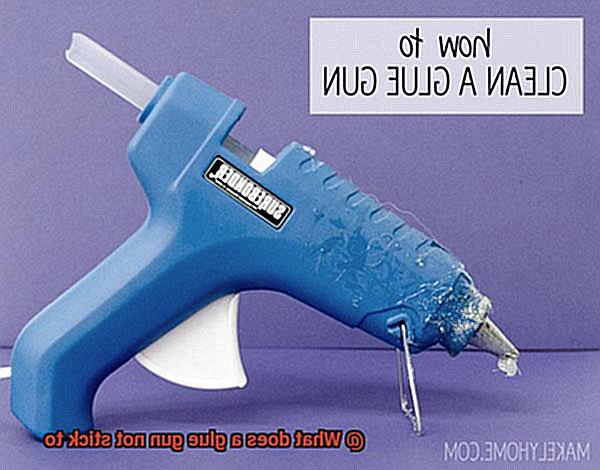
So, why is it important to prepare an oily or greasy surface before applying CA glue? Let’s dive into the research to find out.
Oils and grease create a barrier between the adhesive and the surface, hindering proper adhesion. This can result in weak bonds or even complete failure of the adhesive. And let’s face it, nobody wants their hard work to go down the drain.
To ensure successful bonding with CA glue, proper surface preparation is crucial. The first step is to remove any oils or grease from the surface. Fortunately, there are degreasers and solvents specifically designed for this purpose. These magical products break down and remove oils and grease, allowing the adhesive to do its job effectively.
Different types of oils or greases may require different methods of removal. For example, if you’re dealing with oil-based lubricants, a solvent-based degreaser may be your best bet. But if you’re tackling cooking oils or greases, a detergent-based cleaner might be more effective. It’s all about finding the right tool for the job.
Sometimes, a little elbow grease (pun intended) is necessary. You may need to scrub the surface with a brush or use sandpaper to roughen it up and remove any stubborn contaminants. Remember, a clean surface is a happy surface for adhesive bonding.
One last thing – make sure that the surface is completely dry before applying CA glue. Any residual moisture can mess with the bonding process and compromise the strength of the adhesive bond. Patience is key here.
Oh, and before I forget, certain types of plastics like polypropylene and polyethylene are notoriously difficult to bond with CA glue due to their low surface energy. These plastics may require special surface treatments or specific adhesives designed for them.
Moisture-Sensitive Surfaces
It’s quick, robust, and can fuse almost anything together in a snap. But here’s the catch – it doesn’t quite get along with moisture-sensitive surfaces. So, what’s the science behind this sticky situation? Let’s delve into the details and uncover the truth.
Moisture-Sensitive Surfaces: Who Are They?
Imagine a world where wood, untreated wood, paper, fabric, and certain plastics have an insatiable thirst for moisture. These are the moisture-sensitive surfaces that don’t quite jive with CA glue. They’re like the cool kids at school who prefer their own company. But fret not, we can still find a way to befriend them.
The Trouble with Untreated Wood:
Untreated wood loves its natural oils and moisture. These traits make it quite the challenge for CA glue to adhere properly. So, before attempting to bond untreated wood, grab your trusty sandpaper and give it a good sanding to remove any lurking moisture or oils. Once dry and oil-free, you’ll have better luck achieving that desired bond.
Paper and Fabric: The Moisture Absorbers:
These two are like sponges when it comes to absorbing moisture. If you try bonding damp paper or fabric with CA glue, you’ll end up with a weak bond that won’t withstand any stress. So, exercise patience and let them dry thoroughly before applying our superhero adhesive.
Plastics: The Slippery Slope:
Certain plastics, like polyethylene and polypropylene, have low surface energy and a smooth exterior that poses a challenge for CA glue to stick effectively. It’s like trying to grip a slippery slope with bare hands. To tackle this hurdle, consider using specialized primers or adhesives designed for bonding these plastics. They’ll provide the extra superpowers needed to create a strong and lasting bond.
Alternative Options for Success:
Even if CA glue doesn’t initially adhere well to moisture-sensitive surfaces, all hope is not lost. You can combine it with other adhesives or techniques for a secure bond. Consider using an additional adhesive formulated for these surfaces or even incorporating mechanical fasteners alongside CA glue. With a dash of creativity, you can achieve a bond as formidable as any superhero partnership.
Conclusion:
Now armed with the knowledge of why CA glue struggles with moisture-sensitive surfaces, you can confidently prepare and conquer any bonding challenge that comes your way. Remember to dry and prepare the surface properly, and if all else fails, explore alternative adhesive options. So go forth, my adhesive enthusiasts, and may your bonds be unyielding and steadfast.
Alternatives to CA Glue for Bonding Difficult Surfaces

There are plenty of alternatives out there that can handle those challenging materials with ease. Let’s dive in and explore some of these options.
First up, we have epoxy adhesive. This powerhouse adhesive is known for its versatility and ability to bond various materials like plastics, metals, ceramics, and even glass. It offers exceptional strength and durability, making it the go-to choice for those tough projects.
Next on the list is polyurethane adhesive. This bad boy is perfect for bonding different materials such as wood, plastic, rubber, and metal. It forms a strong bond that can withstand heavy loads and resist moisture, so whether you’re working indoors or outdoors, polyurethane adhesive has got you covered.
Now, let’s talk about mechanical fasteners. Sometimes, screws or nails are the way to go when CA glue just won’t cut it. These trusty little guys provide a secure and durable bond, especially for materials that may expand or contract over time. If you’re dealing with tricky surfaces that need some extra reinforcement, mechanical fasteners are your best bet.
For all you glass and metal enthusiasts out there, UV-curing adhesives are here to save the day. These adhesives require exposure to ultraviolet light to cure, forming a strong and transparent bond. They’re commonly used in industries like electronics and optics where delicate and heat-sensitive materials need to be bonded together.
If you’re working with fabrics or textiles, fabric glue is your new best friend. This specially formulated adhesive bonds fabric without leaving residue or stiffening the material. It’s flexible, durable, and can withstand washing and drying – perfect for all your fabric-related projects.
Last but not least, we have double-sided adhesive tapes. These super handy tapes feature a strong adhesive on both sides, making bonding surfaces a breeze. They’re commonly used in industries like packaging, signage, and automotive – anywhere that requires a reliable and instant bond.
Remember, it’s essential to test any alternative adhesive on a small area before committing to the entire surface. This will ensure compatibility and effectiveness for your specific bonding needs.
cQGZSkSoxJI” >
Conclusion
CA glue, also known as cyanoacrylate adhesive, is a versatile and powerful bonding agent. However, there are certain materials that it simply cannot adhere to. Understanding what CA glue does not stick to is essential for achieving successful and long-lasting bonds.
One of the primary materials that CA glue struggles to bond with is polyethylene (PE) and polypropylene (PP). These plastics have low surface energy, making it difficult for the adhesive to form a strong connection. If you’re working with PE or PP, consider using alternative adhesives specifically designed for these materials.
Another material that poses challenges for CA glue is silicone. Silicone surfaces are often smooth and resistant to adhesion, making it tough for the adhesive to create a firm bond. To bond silicone effectively, it’s recommended to use silicone-specific adhesives or primers.
Similarly, CA glue may not stick well to Teflon (PTFE) due to its low surface energy. Teflon has excellent non-stick properties but can be problematic when trying to achieve a reliable bond. In these cases, specialized adhesives formulated for bonding Teflon should be used.
Additionally, CA glue may struggle with bonding certain types of rubber and vinyl materials. These substances often contain additives or coatings that hinder adhesion. It’s advisable to test the compatibility of CA glue with specific rubber or vinyl before attempting any bonding projects.
Lastly, oily or greasy surfaces can pose challenges for CA glue. The presence of oils prevents proper contact between the adhesive and the substrate, resulting in weak bonds. Ensure that surfaces are clean and free from any oils or contaminants before applying CA glue.
In conclusion, while CA glue is an exceptional adhesive in many applications, it does have limitations when it comes to certain materials. Polyethylene, polypropylene, silicone, Teflon, some rubbers and vinyls, as well as oily surfaces can all present challenges for CA glue.

